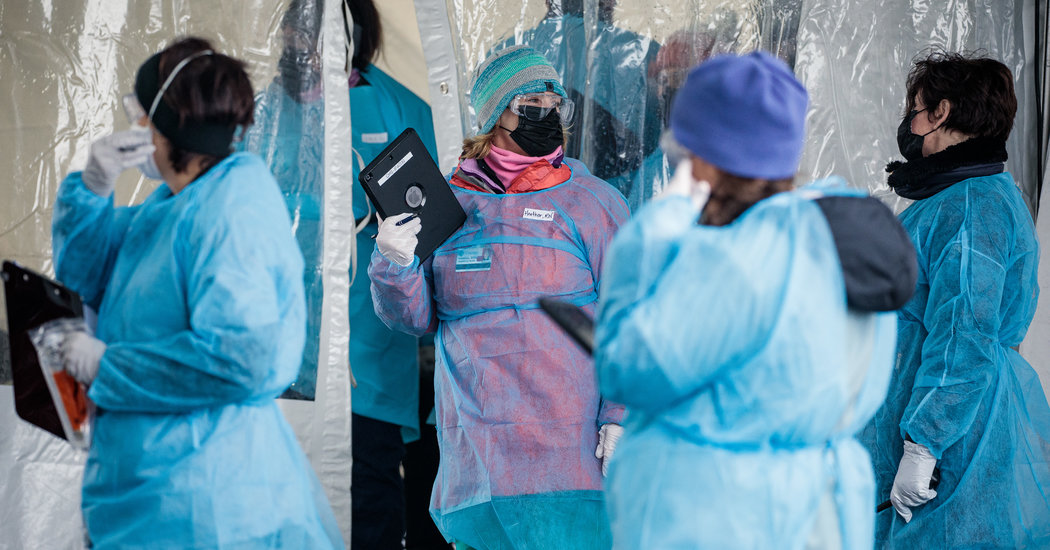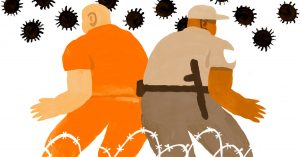As the United States scrambles to expand testing for coronavirus infections, the nation’s capacity for putting into place what should follow a positive result — isolating the infected and quarantining their contacts — is profoundly limited. Yet these two steps are essential for controlling the spread of Covid-19.
Our national tendency is to see testing, and all health care, as being about the individual. But in this crisis, the primary purpose of testing is not self awareness; it is disease control. Reducing the chance that the virus jumps from one person to another requires linking a diagnosis to a key set of preventive actions.
South Korea’s success in slowing the spread of the disease depended not just on doing many tests, but also on its comprehensive approach to following them up. When a person tests positive there, health workers track their exposures at work, at home and in public — down to where they ate out for breakfast. Taiwan launched a toll-free number for citizens to arrange testing, isolation and quarantine if needed, health checks, the delivery of food and the setting up of other resources.
In the United States, the same principle applies: Testing should generate a response to prevent further transmission.
Communities in the throes of a rampant epidemic must focus limited testing resources on critical needs. New York City is using its insufficient supply of tests (and the personal protective equipment to perform the tests) on critically ill patients and on health care workers.
This approach makes sense. For hospitalized patients, a positive result assures that patients will be isolated, with special precautions taken. For health care workers and other essential employees, a positive result removes them from the front lines so they don’t put others at risk.
In other parts of the country not yet coping with a high burden of Covid-19, tests should be used to prevent its spread among those most vulnerable to serious illness and death. In nursing homes, assisted living facilities and other congregate settings, one infection can rapidly spread to dozens of patients, many of whom will need intensive care. If proper infection control cannot be quickly established, it may be necessary to move the infected to temporary accommodations. Seattle is using a motel to house homeless individuals so they don’t spread the disease in shelters.
Once vulnerable populations are covered, it makes sense to test others with symptoms of the coronavirus infection. But here’s the key: Every positive test should set off urgent steps to identify and quarantine their contacts.
Within hours of a positive result, public health workers should be retracing the steps of the infected person. Then, through text messaging and phone calls, contacts should be asked to quarantine themselves for 14 days and track their symptoms. Public health workers should arrange access to care for those contacts if symptoms develop and assist them with relocation if that is needed to protect others.
In Manhattan, for instance, the Four Seasons New York last week began offering front-line doctors, nurses and other medical personnel free rooms to reduce the chance they might spread the disease to family members or others. Public funding should also be made available to support those who need assistance in order to self quarantine.
It’s an understatement to say that state and local public health agencies lack sufficient staffing and resources for the scale of the public health response needed. China’s response reportedly involved 18,000 people in Wuhan alone tracking down contacts of those who were infected. Unfortunately, public health agencies in the United States have lost 30,000 employees over the last seven years.
What’s needed now is a huge public-private partnership. Businesses and community organizations should staff, public health schools should help train, and then agencies should direct an army of public health workers in an aggressive campaign of post-testing follow-up. Insurers and other major consumer businesses should make available their call centers to enable trained workers to help people get tested, instruct callers on requirements for isolation and quarantine, and link them to the resources they need to comply. We need places to house those who cannot stay at home — including hotels, dorm rooms and convention centers.
We shouldn’t wait for broad testing availability to get started. Identifying symptoms can point to those who are likely to be infected, and we should proceed from there. That’s why call centers, contact tracing and isolation support must be activated now. Then, as testing becomes more available, these follow-up strategies will become more targeted and effective.
The critical question for the United States is not how many coronavirus tests are being done. It’s how many diagnoses are leading to action. While tests are scarce, those who can stay home with a mild illness or no symptoms should do so, leaving the tests to those most at risk of passing the infection to others. Responding quickly and effectively prevents the spread of coronavirus. Doing so is vital to the health of us all.
Joshua M. Sharfstein is a medical doctor and professor of the practice in health policy and management and Melissa A. Marx is an epidemiologist and an assistant professor, both at the Bloomberg School for Public Health at Johns Hopkins University.
The Times is committed to publishing a diversity of letters to the editor. We’d like to hear what you think about this or any of our articles. Here are some tips. And here’s our email: [email protected].
Follow The New York Times Opinion section on Facebook, Twitter (@NYTopinion) and Instagram.



















